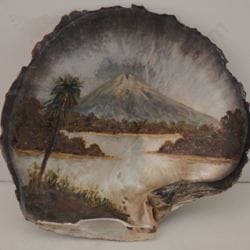Feb 13, 2018 - New technology from a student-led research project at Victoria University of Wellington looks set to revolutionise the way geotechnical engineers monitor and predict landslides, potentially helping to save countless lives and cut costs. Engineering and Computer Science student Jonathan Olds was looking for a research project for his Master’s and his supervisor, Professor of Network Engineering in the School of Engineering and Computer Science Winston Seah, suggested developing and testing an automated solution for the long-term monitoring of landslides. The result of that research is AccuMM, which Jonathan validated with a pilot installation in Taiwan. image004.png“The holy grail of managing landslide risk is prediction,” says Nick Willis, Viclink’s Commercialisation Manager, Engineering, who is working with the researchers to bring the product to market. “But predictions can only be made if movement—or, more importantly, the acceleration of land mass—can be measured right down to the number of millimetres per day, over a long period of time.” He says the traditional method of measurement involves sending a surveyor or engineer out into the field each day to measure land movement with theodolites—a manual, costly process. Even the higher tech options involving robots or drones are costly or have their drawbacks. AccuMM uses low-cost solar or battery-powered wireless GPS sensors together with a unique, cloud-based algorithm to calculate the location of each sensor, relative to a fixed-base station. This enables daily measurements to be taken at multiple points on a landslide without the need for site visits, with no line-of-sight or cabling requirements, and no need for intervention at the site for five or more years.
Following the pilot in Taiwan, the technology is now being trialled closer to home in areas where landslides have occurred, including monitoring the transport corridors in Kaikoura, Kāpiti Coast and Wellington.
“Approximately 66 million people—one percent of the world’s population—are currently in high-risk landslide areas,” says Mr Willis “Add to that events such as global warming, changing rainfall patterns and aging infrastructure and it’s not hard to see the increasing need for this kind of technology.” Professor Seah says, “By exploiting the similarity in wireless channel conditions between sensors placed in close proximity, we are able to achieve a high degree of accuracy compared with much higher cost systems. We can power the wireless network by energy harvesting, which means our system can operate for long duration to meet the monitoring needs of geotechnical engineers.” Viclink is targeting the product at geotechnical engineering companies that undertake long-term analysis and monitoring of landslide risk, as AccuMM measures but does not interpret the data or send real-time alerts.
| A Victoria University release || February 13, 2018 |||



